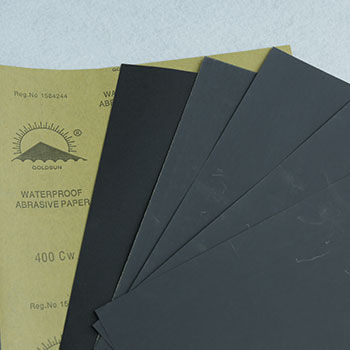Waterproof abrasive paper made from kraft paper or latex paper as backing, high quality resin as adhesive and high quality silicon carbide or fused alumina as abrasive. processing by high-tech HV electro coating. Waterproof abrasive paper is suitable for both wet and dry grinding .In some conditions, wet grinding can prevent the dust and reduce the amount of heat quantity and improve the quality of work-pieces and extend its service life. This kind of abrasive paper is widely used as grinding and polishing in industries like automobiles, aerospace, ship, light industry, leather processing, furniture, décor, jewels, watches and textile industry, etc. Except for the following standard items, we can also produce base on customer’s special requirement.
MAIN APPLICATION
Primary paint polishing, paint surface finishing.
Putty grinding.
Metal grinding, rust removing.
Wood and synthetic material grinding and polishing.
STANDARD SIZE - 230mm x 280mm,230mm x 230mm. ( Other size as form as sheet and roll )
STANDARD GRIT - P2500-P60(Nonstandard grits base on customer’s requirement.)
STANDARD PACKAGING - 100 pieces/sleeve, 1000 pieces/carton.( Packed under customer’s requirement )
Perfect waterproof technique, oil resistant and flexible in actual use.
Sharpness silicon carbide grain, higher productivity and uniform finishing surface.
Longer life time due to high strength resinous bonding.




